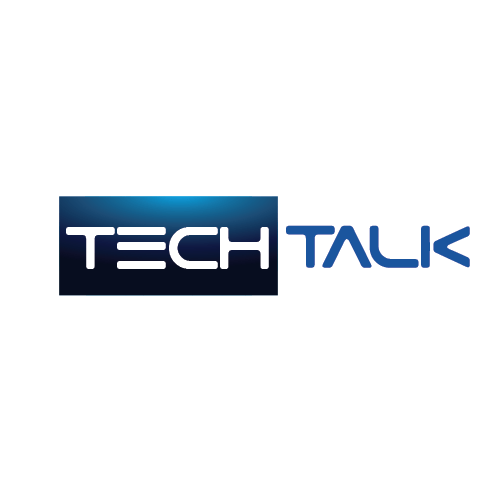
AI Battle Intensifies: Microsoft’s Direct Confrontation with Apple
Animoji. FaceID. On-device augmented reality. These remarkable functionalities were made attainable through a compact computational cluster nestled deep within Apple’s chips—the Apple Neural Engine (ANE). After seizing control of mobile AI computation with ANE, Apple extended its application to the M series of MacBooks, marking a transformative paradigm shift for machine learning researchers—an era of specialized on-device AI computation.
Now, a formidable contender has emerged. Recently unveiled at the prestigious three-day Microsoft Build conference, the colossal entity from Redmond is boldly diving into AI computation at the edge. Forging partnerships with industry leaders such as Intel, AMD, and NVIDIA, Microsoft has announced an exclusive range of enhancements tailored explicitly for AI computation at the silicon level.
With this audacious maneuver, the stalwarts of the PC ecosystem have united to challenge Apple’s dominion over the AI realm.
Dreams of Frontier Technology
During the recent Microsoft Build conference, the corporation expressed its ardent aspiration to integrate AI into every facet of its product line. Furthermore, developers were incentivized to create AI features for Windows and other Microsoft products, enticed by the allure of the Hybrid AI Loop and Windows Olive for model optimization. However, one crucial revelation stood out—the announcement of collaborations with AMD, Intel, NVIDIA, and Qualcomm to engineer novel silicon optimized for AI computation.
In conjunction with hardware manufacturers like Dell, HP, Lenovo, and others, a new generation of personal computers with on-device AI capabilities will be realized.
By forging closer ties with chip manufacturers, Microsoft appears to be advocating for more efficient on-device inference, seeking to reduce reliance on Azure for such tasks. This approach will not only reduce costs for Microsoft but will also empower the next wave of computers with dedicated neural processing units (NPUs). These purpose-built chips are designed for AI workloads, offering faster performance than general-purpose chips while maintaining superior efficiency.
There have been reports of AMD and Microsoft collaborating to produce more potent AI chips. Rumors that Microsoft is providing support to bolster AMD’s AI chips are now taking shape following the announcement of Windows AI. The 7040-series of laptop chips from AMD already boasts an integrated NPU and seamlessly interfaces with Windows 11 through the ONNX runtime. Comprehensive documentation detailing the AI capabilities of the 7040-series chips is now available, facilitating developers in incorporating AI functionality into their applications.
As part of this alliance, Intel, another key player, has disclosed that its innovative line of Meteor Lake chips houses a built-in neural vision processing unit (VPU). This groundbreaking addition will purportedly expedite AI inference while concurrently enhancing performance in software like Adobe Premiere Pro, fostering more effective machine learning. Additionally, Intel has extended support for these chips to WinML and DirectML, empowering developers to directly harness the potential of this cutting-edge hardware.
Although NVIDIA has already made substantial strides in establishing the AI computation market, its journey is far from complete. Through its partnership with Microsoft, NVIDIA has released updates to its driver software, exponentially boosting the AI capabilities of RTX-enabled GPUs. Leveraging the intrinsic tensor cores of these GPUs, NVIDIA has promised performance enhancements for machine learning models, including an impressive twofold improvement for Stable Diffusion.
Beyond these partnerships, Microsoft has invested significant resources in cultivating a robust development chain for AI tasks on Windows. Central to this endeavor is the ONNX runtime, complemented by tools like Windows Olive, which streamline model optimization. The WinML API also plays a pivotal role in facilitating AI development on the platform, offering a user-friendly method to integrate machine learning capabilities into Windows applications.
While this partnership may evoke the imagery of the Avengers assembling in the realm of technology, it appears that a formidable adversary awaits—the unyielding Thanos. Apple has already laid the groundwork for on-edge AI development workloads.
Apple-Microsoft: A Confrontation of Titans
Ever since Apple transitioned to the system-on-chip (SoC) design for its laptop chips, the Neural Engine has become an indispensable element of its chips. In 2021, TensorFlow was updated to enable AI models to undergo training on the ANE. Apple asserts that this breakthrough has resulted in nearly a fivefold improvement in training times for common workloads like CycleGAN, Style Transfer, and DenseNet, among others.
Microsoft is diligently striving to catch up to the M-series of chips by collaborating with chipmakers, striving to recreate the enchantment of the ANE.
While the Neural Engine occupies a prominent role in the equation, it represents only a fraction of the overall narrative. In addition to incorporating AI compute into their latest laptops, Apple has devoted considerable effort to creating developer tools that harness the potential of the ANE. Their development ecosystem encompasses offerings such as the Core ML library, enabling developers to integrate pre-built machine learning models and AI functionalities seamlessly. Moreover, Apple provides machine learning APIs for diverse tasks such as vision, speech, and natural language processing, all powered by the ANE.
In a similar vein, the WinML API serves as Microsoft’s response to Apple’s Core ML library. WinML empowers developers to harness on-device processing capabilities for integrating machine learning into their applications.
Apple exhibits a strong inclination toward on-device machine learning processing, a strategic emphasis that permeates their entire product lineup. It is, therefore, unsurprising that all their offerings align with this vision. Conversely, Microsoft consistently provides Azure as a fallback option for developers when the target devices lack AI capabilities, ensuring maximal compatibility.
John Giannandrea, Apple’s Senior Vice President for machine learning and AI strategy, emphasized in an interview, I understand the perception that larger models in data centers yield higher accuracy, but it’s actually a fallacy. Technically, it is incorrect. Running the model in close proximity to the data, rather than moving the data around, proves to be superior.
As we observe, Apple and Windows may be targeting the same market, but they employ fundamentally distinct approaches. With its current advantage, privacy-focused features, and on-device processing capabilities, Apple is likely to maintain its lead. Nonetheless, Microsoft’s strategic approach will democratize AI, bringing Windows devices on par with Apple’s offerings for AI-centric tasks.
While it may appear that Apple and Windows are on a collision course within the AI ecosystem, both companies are determined to remain at the forefront of innovation. The market is progressively leaning towards the deployment of AI at the edge, urging system manufacturers to incorporate AI capabilities into their devices. For these two industry leaders, providing support and nurturing a robust developer ecosystem is a logical step toward propelling personal computing into an AI-driven future.





